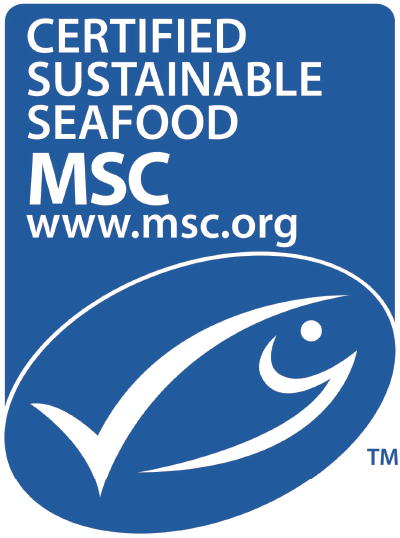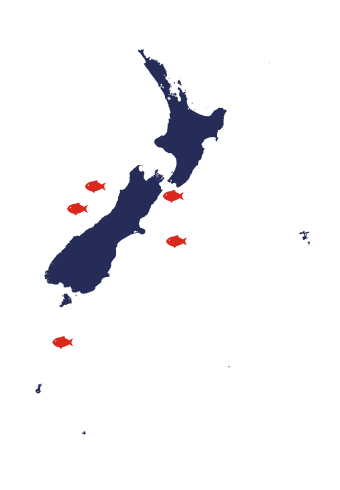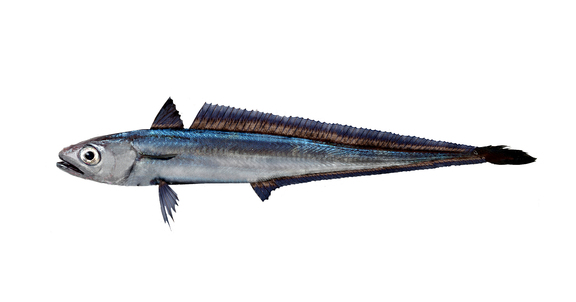Hoki
Macruronus novaezelandiae
A firm, succulent white fish with a delicate flavour.
Hoki is New Zealand's most important commercial fish species and we take pride in the fact that our stocks are among the best managed in the world.
The Marine Stewardship Council Eco-label assures you that our Hoki reflects sustainable fishing at its finest. It means that our fish stocks are healthy, we don't damage the Eco-system and there is ongoing effective management of Hoki fisheries.
The Hoki fishery operates in four main regions around New Zealand’s south island: on the Chatham Rise, Campbell Plateau, along the West Coast and in the Cook Strait.
The premium fillet of Hoki is highly regarded for its versatility and is often used for further processing into a diverse range of customer products. Hoki is in high demand around the world and is available in a variety of forms.

Key Information
Family
Hoki belong to the Merlucciidae family and are related to hake.
Physical attributes
Dark purple-blue along the back, shading to paler iridescent blue on the upper side and mirror-like silver below. The fins are dark grey. Hoki have a long tapered body. The eyes and jaws are large.
Hoki flesh is delicate and succulent, it has no pin bones and flakes easily when cooked.
Sustainability
Hoki has been certified as sustainable by the Marine Stewardship Council (MSC), the global gold standard for sustainability, since March 2001. It was re-certified in October 2007, August 2012 and again in 2016.
Hoki is also managed by the Ministry for Primary Industries using the New Zealand Quota Management System (QMS). Hoki are managed as two separate stocks, an eastern and a western stock. The two biological stocks of Hoki are subject to extensive scientific monitoring, with up to 3 research surveys completed every year and an annual stock assessment.
Geographical location
Hoki lives mainly in the middle water at depths from 300-900 metres and can be caught all around New Zealand.
Market Names
- New Zealand: Hoki, Blue Grenadier, Blue Hake, Whiptail
- Spain: Merluza Azul
- Australia: Hoki, Blue Grenadier
- Italy: Nasello Azzurro
- Germany: Langschwanz-Seehecht
- European Union: Blue Grenadier
- Commonwealth of Independent States: Novozelandskiy macruronus
Locations Caught

Profile
Average weight
0.5-3.5 kg
Average length
60-100 cm
TACC i
110,000 Tonne
Talley's Catch
25,000+ Tonne

Nutritional information
Average quantity per 100g
Energy
307 kj
Protein
15 g
Fat, total
1.2 g
Carbohydrate
0.3 g
Seasonal availability
Flavour and cooking
Hoki has firm succulent flesh with a delicate flavour, low oil content and few bones. The fillets are white and flake easily when cooked. Hoki is ideal for most cooking methods including baked, fried, grilled, steamed, curried and sauteed. Hoki fillets are a convenient, versatile option to consider for cooking in foodservice settings like cafes, restaurants and resthomes.
Click here for recipes
Want to know more?
If you have any enquiries please feel free to contact our friendly sales team.
© Talley's 2025 • Web design and development by Plato
